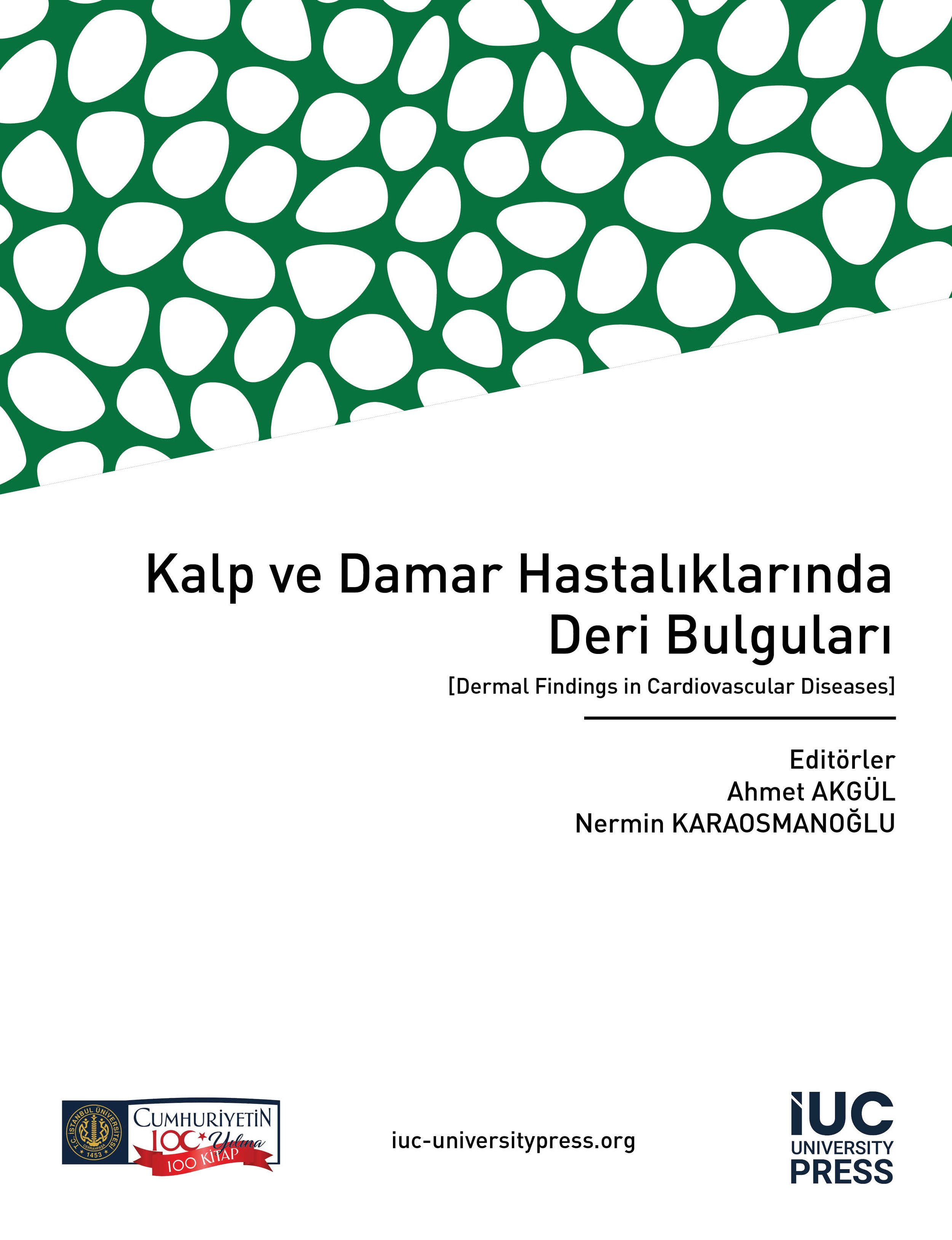Dermal Findings in Cardiovascular Diseases
The skin is the largest organ of our body. It is kind of display window of the pathophysiology of internal organs. In other words, when a problem occurs in any organ, it also occurs with deterioration of the skin function and structure within a certain period. The most typical example of the above statement occurs in our circulatory system, because the subcutaneous capillary vascular system and the main vessels coming out of the heart are of the same origin, therefor disruption in one of them is quickly reflected in the subcutaneous vessels. However, these patients, rightfully, first apply to dermatology clinics for the problems they observe on their skin. Furthermore, dermatologists apply for cardiovascular surgery consultation.
This co-existence is not only for the arteries, but also for the venous and lymphatic system as well.
In this book, first the subcutaneous vascular structure is reported for understanding the relation of the circulatory system with the skin as mentioned above.
While in some cases cutaneous lesions deal with circulatory pathology while some other similar cutaneous findings concern only the skin, so differential diagnoses that are indispensable for treatment are also included.
It is known that the etiology of vascular stenosis and/or pathologically enlargement is the same for subcutaneous vascular structure, so it should be noted to evaluate the circulation for both internal organs and extremities.
The most well-known examples of this are hemangiomas and vascular malformations. Additionally, we can add syndromes among this group as Kawasaki, Carsinoid, Klippel Trenaunay Syndromes…
Impairment of venous and lymph drainage in the limbs also presents with skin damage and cutaneous ulcers, where varicose veins, deep vein thrombosis and lymphedema are included in this group.
Pressure and/or compression ulcers occur due to subcutaneous circulation impairment which reveal their first findings on the skin.
Cellulitis as well as lipoedema, considered as a cosmetic issue, are also another consequence of subcutaneous circulation problems.
In this book, the dermal findings of cardiovascular diseases are evaluated in detail.
I believe that our book will update the knowledge of both dermatologists and cardiovascular surgeons and be a guiding resource for all healthcare professionals interested in the subject.
Prof. Dr. Ahmet AKGÜL

